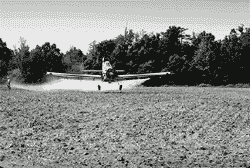Long distance travellers
 air pollution is not just a local problem. Geoscientists at Texas a&m University, usa, have found that pollutants can travel thousands of miles. So the air one breathes may contain pollutants brought by the wind from afar.
air pollution is not just a local problem. Geoscientists at Texas a&m University, usa, have found that pollutants can travel thousands of miles. So the air one breathes may contain pollutants brought by the wind from afar.
A team of geoscientists, comprising June-Soo Park, Steve Sweet, and Terry Wade, at the Texas A&M's Geochemical and Environmental Research Group (gerg), came to these conclusions while studying how pollutants such as polynuclear aromatic hydrocarbons (pahs), pesticides and polychlorinated biphenyls (pcbs) are transported in the atmosphere to Galveston and Corpus Christi bays and removed by rain and dust. The scientists also studied how gaseous pollutants are exchanged between the air and water.
They found that air pollutants could be transported over long distances instead of being trapped in the ocean or the soil, while gaseous water pollutants could evaporate into the atmosphere instead of staying in the ocean. In both cases, the airborne pollutants could lead to deposition of pollutants long distances from where they were produced or used.
One interesting find of the scientists' work is related to the gas exchange between air and water. "Our most surprising result is that there is a flux of contaminants currently coming out of Corpus Christi Bay to the atmosphere,' Wade says, 'while we previously assumed that all the flux of contaminants would be into the water.' Wade suggests that pah s might come from the evaporation from small petroleum spills.
"In an area where we produce petroleum, there is natural seepage and accidental releases,' he says, "so if you spill pah in the ocean, a lot of it evaporates and then can be transported long distances.'
T heir research also indicates that ddt and pcb evaporate into the atmosphere and are transported over long distances. "Scientists assumed that when you spray ddt on crops, the insecticides stay in the soil. They might be washed into rivers when it rains and be transported down rivers to coastal areas. To our surprise, we discovered that the pesticide can volatilise into the gaseous state and be transported in the air over long distances fairly rapidly,' Wade says.
"Most scientists used to think that organic pollutants were not present as gas in the air. However, we have learned over the last 30 years that organic pollutants can be in the vapour phase, which means that they can be transported over long distances.'
For example, high levels of pesticides such as ddt , chlordane and toxaphene are present in beluga whales from the Arctic, where they are surely not used.
Related Content
- Striving for clean air: air pollution and public health in South Asia
- Electrification with renewables: enhancing healthcare delivery in Burkina Faso
- Powering change with each pedal
- Review of developments in transport in Asia and the Pacific 2021: towards sustainable, inclusive and resilient urban passenger transport in Asian cities
- Order of the National Green Tribunal regarding disposal of sewage into Buckingham Canal by private lorries, Chennai, Tamil Nadu, 20/10/2020
- Combating COVID-19 in Asia and the Pacific: Measures, Lessons and the Way Forward
